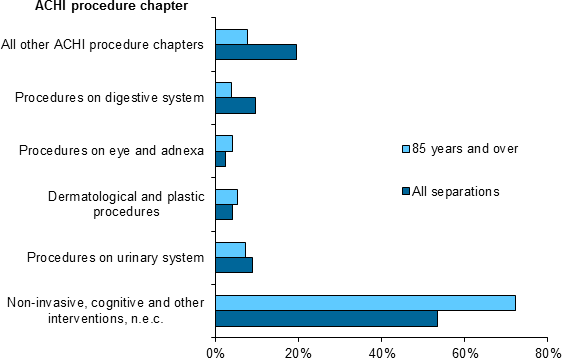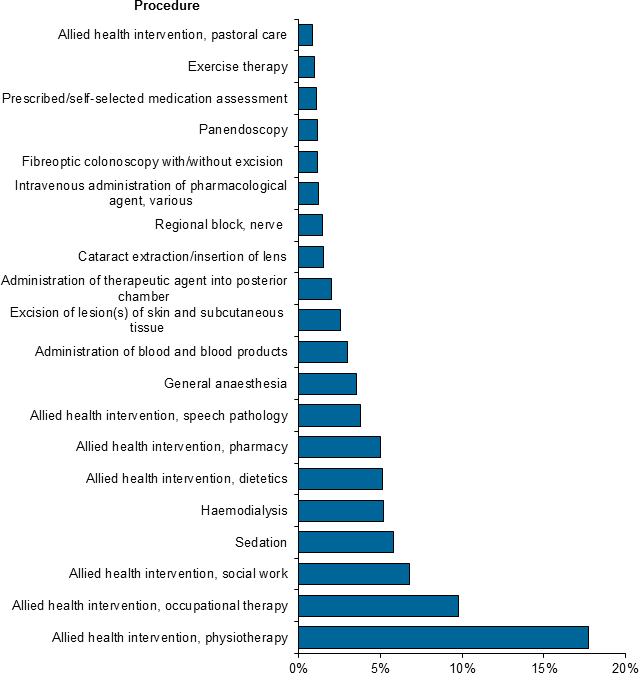What procedures did patients aged 85 years and over undergo?
In 2014–15, 72% (1,080,473) of procedures for patients aged 85 and over were Non‑invasive, cognitive and other interventions n.e.c. (such as diagnostic, therapeutic, anaesthesia, pharmacotherapy and allied health interventions), compared with 53% (10,867,197) of procedures for all patients (see Box 3). Dermatological and plastic procedures (5.1%, 77,040) and Procedures on eye and adnexa (4.1%, 61,816) were also proportionally more common for patients aged 85 and over compared with all patients (Figure 14).
Box 3: Understanding the classification of hospital procedures
A procedure is a clinical intervention that is surgical in nature, carries an anaesthetic risk, requires specialised training and/or requires special facilities or services available only in an acute care setting. Procedures therefore encompass surgical procedures and non-surgical investigative and therapeutic procedures, such as X-rays. Patient support interventions that are neither investigative nor therapeutic (such as anaesthesia) are also included.
One or more procedures can be reported for each hospital admission, but procedures are not undertaken for all admissions, so only some records include information on procedures.
In 2014–15, procedures were reported for hospital patients using the Eighth edition of the Australian Classification of Health Interventions (ACHI) that groups together similar interventions.
The ACHI classification is divided into 20 chapters by anatomical site, and within each chapter by a 'superior' to 'inferior' (head to toe) approach. These subchapters are further divided into more specific procedure blocks, ordered from the least invasive to the most invasive. The blocks, which are numbered sequentially, group the very specific procedure information.
Figure 14: Proportion of separations by ACHI procedure chapters for patients aged 85 and over and all separations, 2014–15, per cent

Note: n.e.c. not elsewhere classified.
Source: NHMD.
Examining specific procedures, in 2014–15, 51% (758,866) of procedures for patients aged 85 and over were allied health interventions (such as social work, physiotherapy, occupational therapy, dietetics and diabetes education), compared with 21% for all separations. The most common allied health intervention was Physiotherapy, followed by Occupational therapy and Social work (Figure 15). Sedation and General anaesthesia, which are companion procedures for many other procedures, together accounted for 9.3% (139,446) of procedures for patients aged 85 years and over.
Figure 15: The 20 most common procedures reported for separations of patients aged 85 and over, 2014–15, per cent

Source: NHMD.


